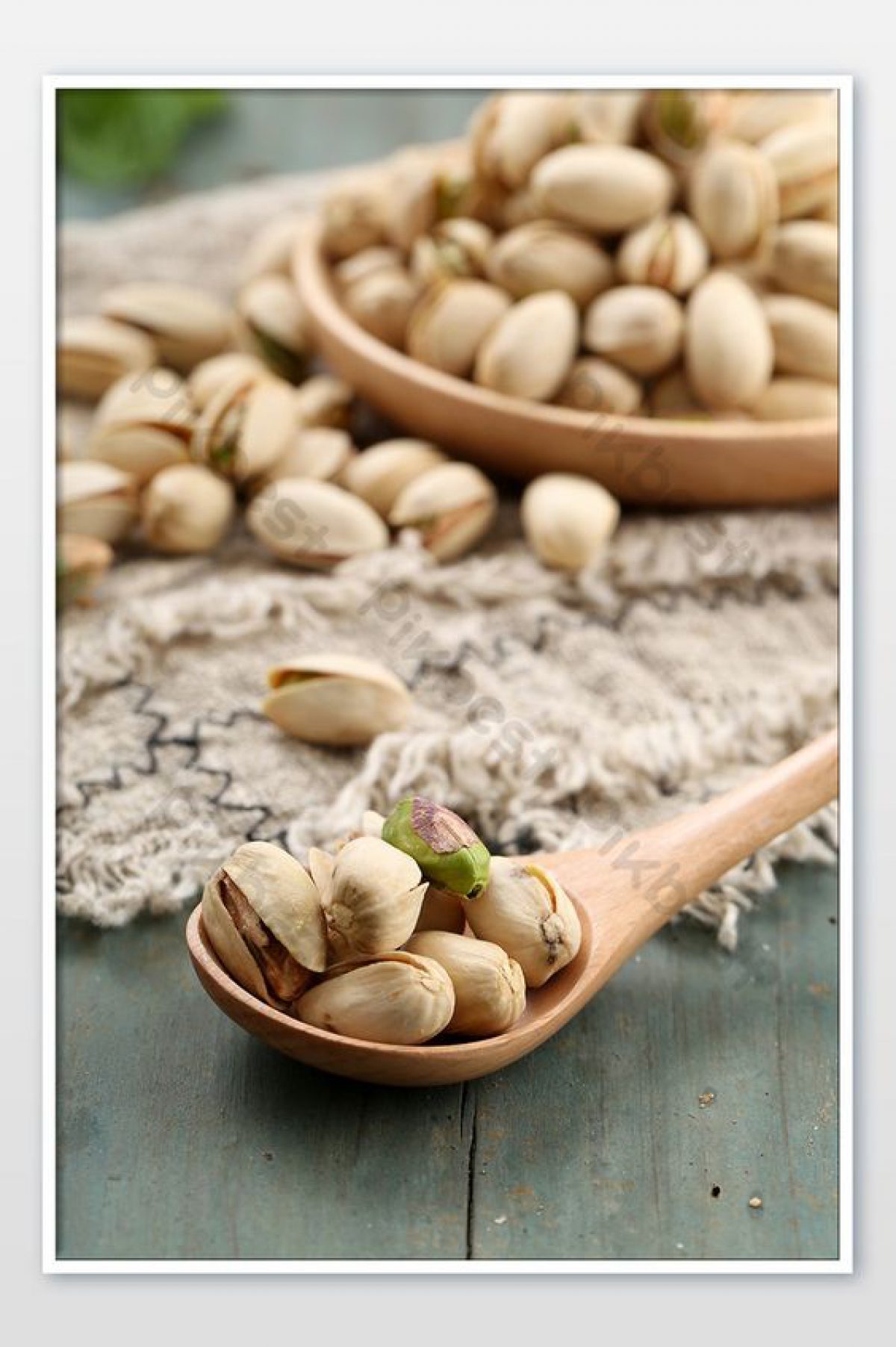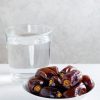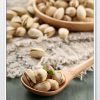
Everything You Need to Know About Pistachios
Everything You Need to Know About Pistachios
It’s time to get cracking! The pistachio harvest in Iran (The best producer of these delicious nuts) runs August and September has just started. Not only are pistachio nuts delicious and fun to eat, they are also very healthy.
These nuts are edible seeds of the “Pistacia vera” tree containing healthy fats and are an excellent source of fiber, protein and antioxidants. They also carry many crucial nutrients and are suitable for weight loss and fitness as well as abdomen and heart health. People have been consuming pistachio since 7,000 BC. Nowadays, they’re prevalent in many recipes such as ice cream and desserts.
1. History
In this paragraph, I’m going to give a short history of pistachios. Pistachio is from late Middle English “pistace”, from Old French, superseded in 16th century by forms from Italian “pistaccio”, via Latin from Greek “pistakion”, from old Persian “pesteh.”
The pistachio has a long and fascinating history. They are one of the oldest flowering nut trees which have been described as being native to Iran, Central and Western Asia. Recent archeological proof in Turkey implies that people were enjoying them as early as 7,000 B.C. Growing in hot environments, pistachios expanded from the Middle East to the Mediterranean, quickly becoming a treasured food between royalty, tourists and common folk alike.
Myth has it that the Queen of Sheba declared pistachios as an exclusively royal food, going so far as to forbid peasants from producing the nut for their personal use. Nebuchadnezzar, the ancient ruler of Babylon, had pistachio trees planted in his famous hanging gardens. Also, in the first century A.D., Emperor Vitellius debuted this expensive nut in Rome. According to Muslim myth, the pistachio nut was one of the fruits which Adam brought to Earth.
The pistachio’s high nutritional value and long storage life also made it an indispensable travel item among early explorers and traders. Along with almonds, travelers frequently carried pistachios across the ancient Silk Road that connected China with the West.
Pistachio is the seed of the pistachio tree. Pistachio tree was first found in Turkey and Iran. At that time, pistachios were the food of the nobility. In later years, it was used only at celebrations and parties. Later it was eaten in a variety of desserts, sweets, ice cream and even as an appetizer. This seed was known as “smiling nuts” because of its shape.
2. Botany
Pistachio is used as a plant food and invigorating and curing many diseases. The domestic pistachio tree (Pistacia Vera) belongs to the genus (Anacardiaceae). The genus Pistacia has 11 species, all of which secrete turpentine. Pistachio tree has compound comb leaves and pistachio fruit is botanically classified as shaft fruit. Pistachio tree has two bases and both male and female trees are needed to produce fruit.
The flowers of the pistachio tree have no petals and nectar-forming tubers and do not attract bees, and the pollen is dispersed by the wind. The pistachio tree has small leaves, falls in autumn and spends the winter asleep. The rooting of the pistachio tree is axial and vertical and the power of sub-root production in the pistachio tree is weak. The seedling stage of pistachio tree is long and before the age of five, fruit trees produce little fruit and from 10 to 12 years old, full and economic fruiting of the tree begins. The most important species of the genus Pistacia are: P.Vera or common pistachio, P.Khinjuk , P.mutica, P.atlantica, P.terebinthus. P.integerrima. The most important pistachio cultivars in Iran are: Ouhadi, Kaleghoochi, Akbari, Ahmad Aghaei, Mumtaz, Badami Zarand, Shahpasand, Sefid Nogh pistachio, Khanjari Damghan and Qazvini.
The pistachio trees have widespread root systems enabling them to dig the soil more deeply. Therefore, pistachios are designed to survive prolonged periods of desiccation. That’s why they need well-drained soils. In such grounds, the tree can endure nearly high levels of irrigation water or salinity in soil or irrigation water.
The fruit is one of the desert plants which are incredibly tolerant of saline soil. It grows strong when irrigated with water having 3,000–4,000 ppm of water-soluble salts. Pistachio trees are relatively stable in the right circumstances and can withstand temperatures varying between −10 °C (14 °F) in winter and 48 °C (118 °F) in summer. They require well-drained soil and a sunny spot. Pistachio trees can’t grow in conditions of high humidity and are susceptible to root rot in winter if they receive too much water and the soil is not adequately free-draining. Long, hot summers are suitable for proper ripening of the fruit. To have the maximum product, the maximum relative humidity must be less than 35%.
The cooling requirement of pistachio tree varies from 600 hours with a temperature of less than 7 degrees Celsius for Kaleghoochi cultivar to 1200 hours with a temperature of less than 7 degrees Celsius for Akbari cultivar and its average value is considered below 1000 hours below 7 degrees Celsius. Failure to provide the required cold for pistachio trees causes delay in flowering, irregular flowering, reduction in the number of leaflets, production of abnormal and simple leaves, etc. Pistachio cultivation is done from 27 to 42 degrees north latitude. Most pistachio trees are located at an altitude of 2000-900 meters above sea level.
3. Morphology and Maturation
Each pistachio nut ripens in fruit packs of various nuts, similar to grapes. Botanically, they’re drupes, the same division as peaches, almonds, cherries, apricots and plums. All drupes include three parts; an exocarp, a fleshy mesocarp (hull) and a shell that contains a seed. The difference between fruits and nuts is in the edible serving. Almonds and pistachios, absorb the seed , instead of the mesocarp as in fruits.
The trees are dormant from December within February and start to bloom with the weather getting warmer in late March. The male fertilizes the female through the April winds, and mid-May entirely develops the shell of the nut. Before June ends, the seed inside the shell has started its accelerated development, and by the first of August, the seed would fill the shell. When the nuts are splitting at the seams, they are ready for harvest in the opening week of September.
The seed indicates to be ripe by the loosening and division of the peel from the shell followed by splitting of the shell inside the slackened skin. In fact, not all nuts broke open while ripening. This depends on the cultivar, weather circumstances, and irrigation plan.
All varieties include a genetic characteristic that causes shell splitting before hull detachment. This causes the splitting of the raw shell which provides access for Aspergillus Flavus spores to the kernel. If you don’t harvest these nuts quickly, they may produce an excellent tool for the growth of Aspergillus and the production of aflatoxin, which is a subsidiary metabolite in the growth of the fungus.
4. The benefits of pistachios
4.1. Pistachios have a small amount of calories compared to other nuts. It is cholesterol free and has a small amount of saturated fat. Fat is a source of energy and helps absorb vitamins A, E, D and K. So pistachios do this because they are high in fat.
4.2. It is one of the best sources of plant protein.
4.3. Pistachios, since they have a lot of unsaturated fats and proteins, should not be consumed more than 18 grams per week.
4.4. Pistachio has a lot of fiber. Fiber helps digest food, regulates cholesterol and blood sugar.
4.5. Pistachio is one of the best sources of potassium among nuts. The potassium of 1 pistachio is equal to the potassium of 1 orange. The amount of potassium in 2 pistachios is more than 1 banana. The potassium in pistachios helps balance body fluids, regulates heart rate, and is very helpful in lowering blood pressure.
4.6. It also contains phosphorus and participates in building bones and teeth, prevents fatigue and weakness, and is useful for strengthening the body’s muscles.
4.7. Pistachio also has some magnesium, which is one of the most important mineral elements for converting food into energy, regulates heart rate and prevents muscle cramps.
4.8. Iron in pistachios is useful for dizziness, fatigue, paleness and anemia.
4.9. Zinc is very important for strengthening skin, hair and nails.
4.10. Pistachios contain vitamins B6, B1 and E. Vitamin B6 helps with protein metabolism and is also involved in food absorption. Vitamin B1 increases energy, strengthens nerve cells and balances appetite.
4.11. Among nuts, pistachio has the most antioxidants. As you know, vitamin E belongs to the group of antioxidants and is responsible for strengthening the immune system, eye health and preventing fatigue and stress, as well as preventing cell damage.
4.12. Pistachio, like other seeds, prevents heart disease. Due to the presence of unsaturated fats, it can lower blood cholesterol.
4.13. Pistachio causes proper brain function and calms the person.-These nuts can prevent the progression of chronic diseases such as cancer.
4.14. Studies have shown; Pistachios can increase the amount of useful cholesterol (HDL) in the blood and at the same time lower the amount of harmful cholesterol (LDL) and triglycerides.
4.15. Pistachio powder cures toothache.
4.16. Pistachio does not change blood pressure and weight gain. But because of its high curry, it is considered a high-calorie snack and should not be consumed too much.
To reduce salt and fat in the diet, you should avoid roasted and salted pistachios.
It should be noted that 28 grams of pistachios provide more than 10% of the body’s need for dietary fiber, vitamin B6, vitamin B1, magnesium and phosphorus.
That’s it guys.



